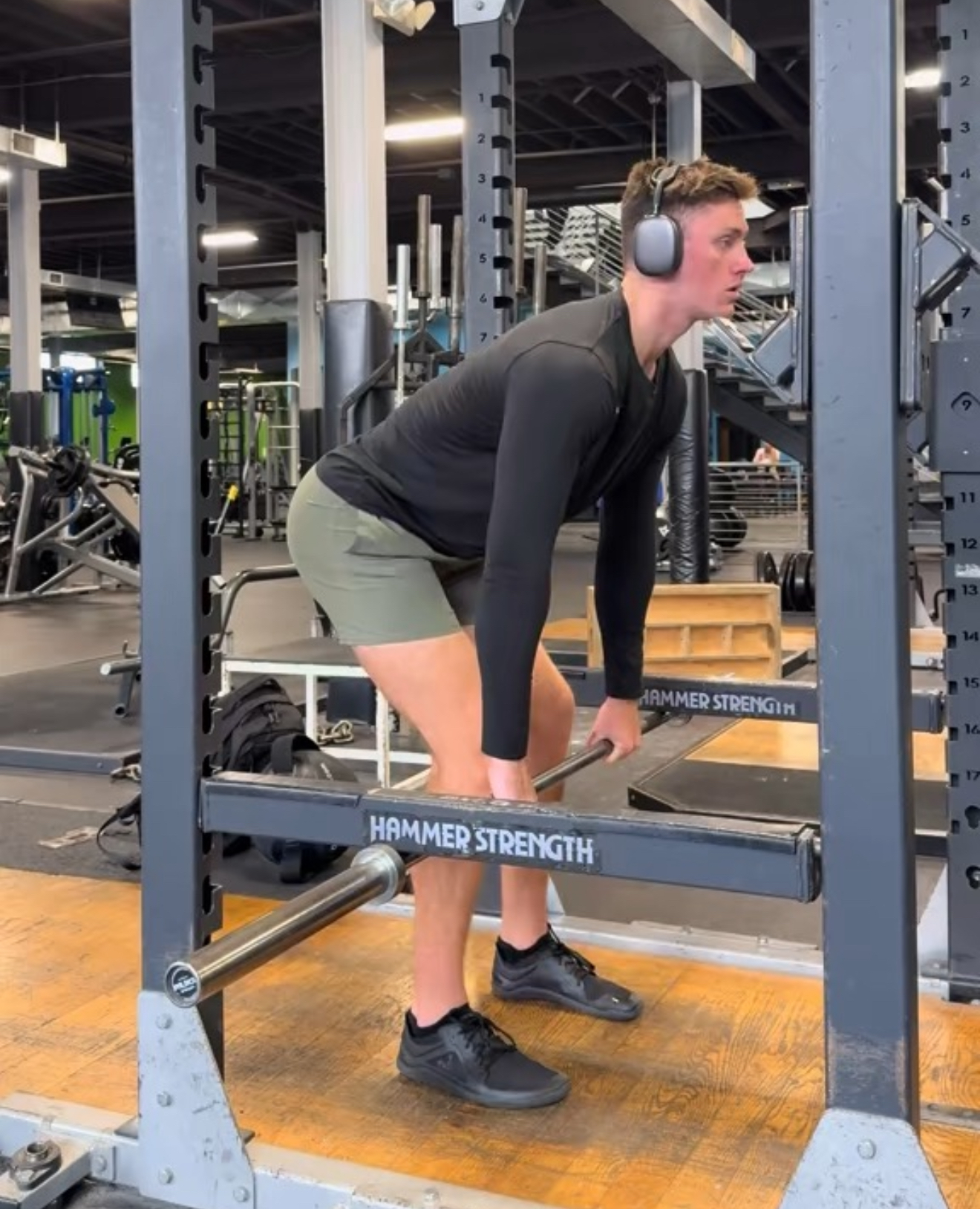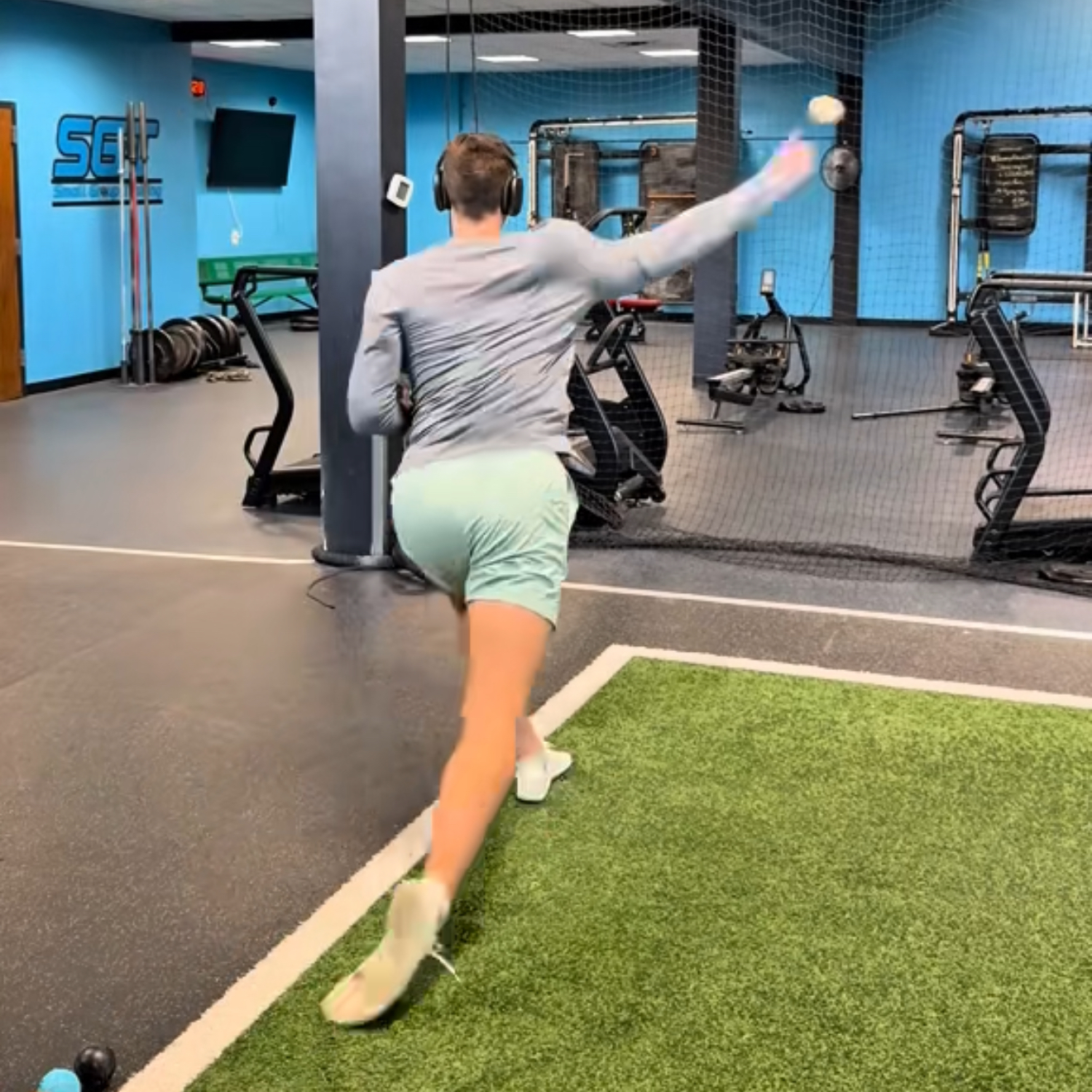Today, March 31st, 2025, marks the official beginning of my journey toward achieving a pitching velocity of 95 mph off the mound. This ambitious goal has been a lifelong dream, and I'm thrilled to document every phase of my high-velocity pitching training program journey, from day one to the moment I reach elite-level performance.
My passion for baseball began when I was very young. I grew up playing multiple sports—baseball, basketball, and soccer—but baseball always stood out to me as the most mentally and physically demanding. It's a game of precision, timing, and constant learning. I've never been naturally gifted, so every bit of progress has come through relentless work, trial and error, and a deep desire to keep improving.
Now, on my 25th birthday, I'm making a full commitment to this mission. I'm starting from square one, rebuilding my body, mechanics, and mindset. This marks Phase I of my high-velocity pitching training program.

Overcoming isometric deadlift exercise - foundational strength training for velocity development
Phase I: Overcoming Isometric Strength Training for Pitching Velocity and Explosive Power
The first block of my high-velocity pitching training begins with strictly overcoming isometric exercises. This method is ideal for building foundational strength and re-engaging neuromuscular patterns. For someone returning after time away, this is the safest and most effective way to recondition the body. It strengthens connective tissue, reinforces joint stability, and prepares the body to absorb and produce force explosively—all without placing excessive wear on the joints.
Weekly Isometric Training Structure for High-Velocity Pitching Training
- Day 1: Lower Pull Isometric Focus – Posterior chain development with sprint mechanics and mobility work.
- Day 2: Upper Push Isometric Focus – Chest, triceps, and shoulder strength supported by scapular stability work.
- Day 3: Upper Mobility & Movement Day – Arm care, med ball throws, T-spine mobility, and structural balance exercises.
- Day 4: Lower Push Isometric Focus – Quad/glute emphasis with sprint and mobility integration.
- Day 5: Upper Pull Isometric Focus – Lat and bicep tension through controlled pulling holds and recovery mobility.
- Day 6: Lower Body Movement & Hip Mobility Day – Explosive throws, hip range of motion drills, and recovery plyometrics.
- Day 7: Off / Recovery
This structure ensures that I build resilience from the ground up before layering on more intensive performance work as part of a long-term high-velocity pitching training strategy.

5-week progressive throwing program designed to safely increase velocity through structured training
Phase I Throwing Program: 5-Week Pitching Velocity Progression
This is where the high-velocity pitching training journey gets tactical. My throwing program is designed around both intensity and volume progression to gradually condition my arm and central nervous system for increased pitching velocity.
Intensity Definitions for High-Velocity Pitching Training:
- Low Intensity: Under 80% of max velocity (~under 67.5 mph based on a 90 mph baseline)
- Medium Intensity: Under 90% of max velocity (~under 81 mph)
- High Intensity: Over 95% of max velocity (~above 85.5 mph)
Volume Definitions:
- Low Volume: Under 40 throws – primarily plyos or short catch play
- Medium Volume: 40–80 throws – includes mechanics work and longer catch
- High Volume: 80+ throws – includes full long toss, bullpens, or blended sessions
5-Week High-Velocity Pitching Training Progression:
Week 1: Rebuilding Arm Health
Six consecutive days of low-intensity, low-volume throwing to reinforce arm path, joint stability, and feel.
Week 2: Controlled Increase
Low and medium-intensity days are alternated to expose my arm to slightly higher demands while maintaining mechanical efficiency.
Week 3: First Exposure to High Intensity
High-intent days are introduced twice this week. These are paired with recovery days to manage stress and begin velocity adaptation.
Week 4: Volume and Intensity Combined
Now that a base is established, I begin combining high-intensity with medium volume more frequently. These sessions mimic game-like output with carefully controlled recovery.
Week 5: Velocity Testing Week
The entire structure leads into a single high-intent testing day to assess gains. I deload in the days prior with medium and low-intensity throwing to ensure readiness. This is my first checkpoint.
Why This High-Velocity Pitching Training Approach Matters
Pitching velocity development isn't just about throwing harder. It's about building a foundation that allows for sustainable gains in high-velocity pitching training. My approach emphasizes biomechanics, progressive overload, and tissue resilience. By beginning with overcoming isometrics and a controlled throwing ramp-up, I'm creating a repeatable system that other pitchers can use for their own velocity development.
I'll be documenting every step of this high-velocity pitching training journey—from the daily grind to the breakthroughs. Expect insights into pitching mechanics, strength training, nutrition, recovery, and mental training for velocity development.
Whether you're a fellow pitcher looking to throw harder or someone interested in high-performance athletic development, this high-velocity pitching training journey is for you.
Follow along as I unlock 95 mph through proven high-velocity pitching training methods. Connect with me on Instagram, TikTok, and YouTube for real-time updates, behind-the-scenes content, and weekly training insights.


